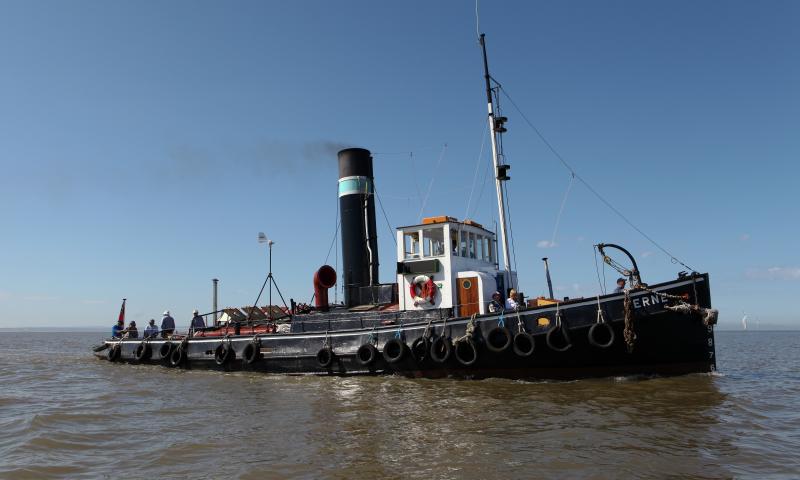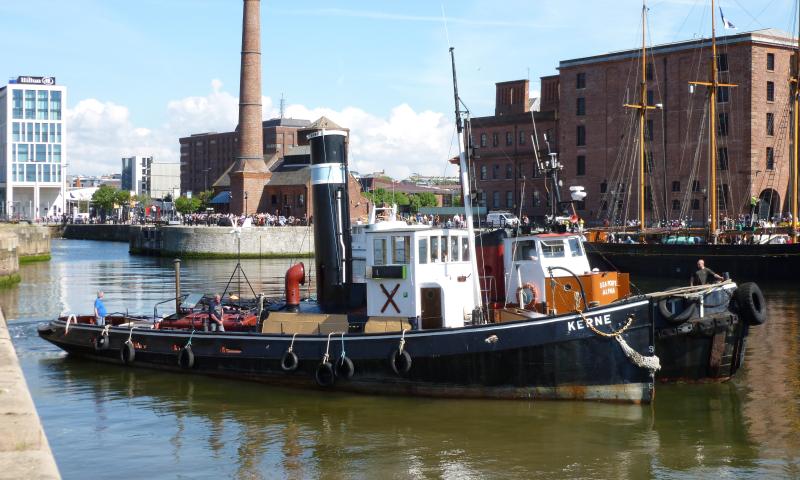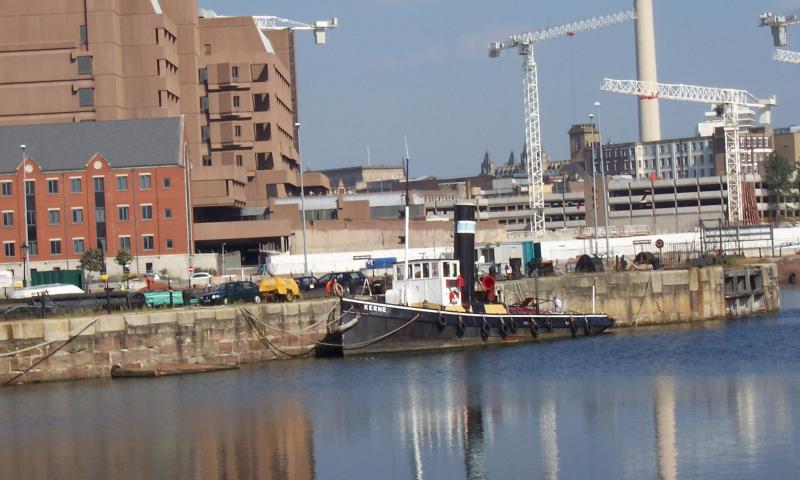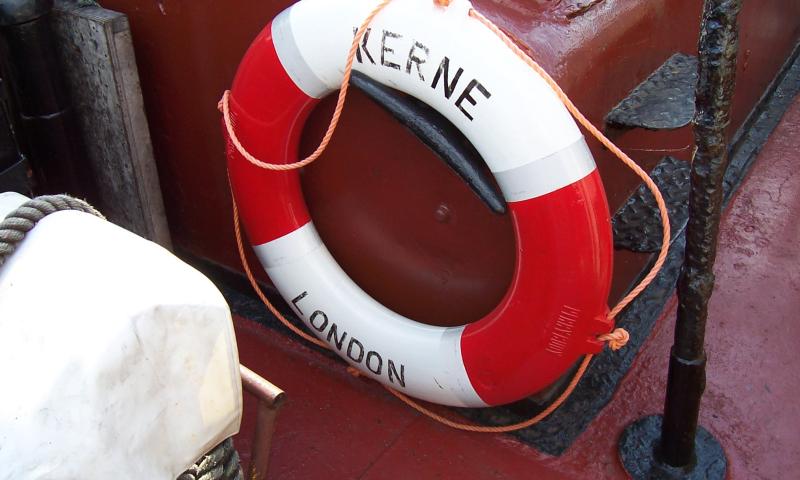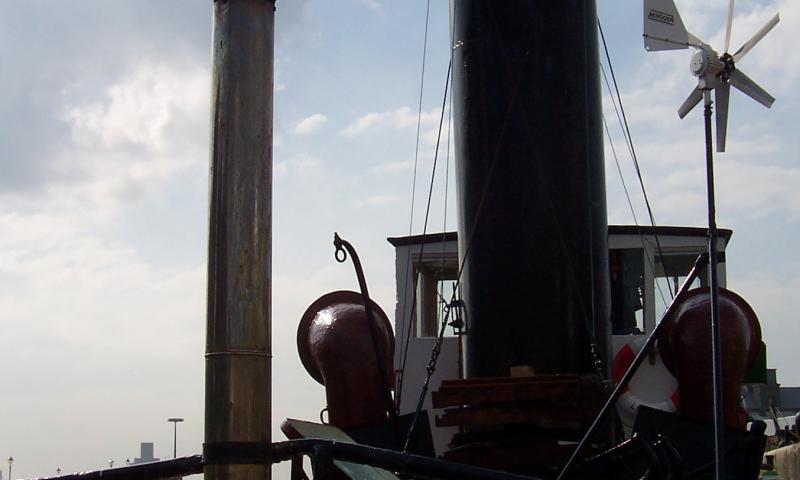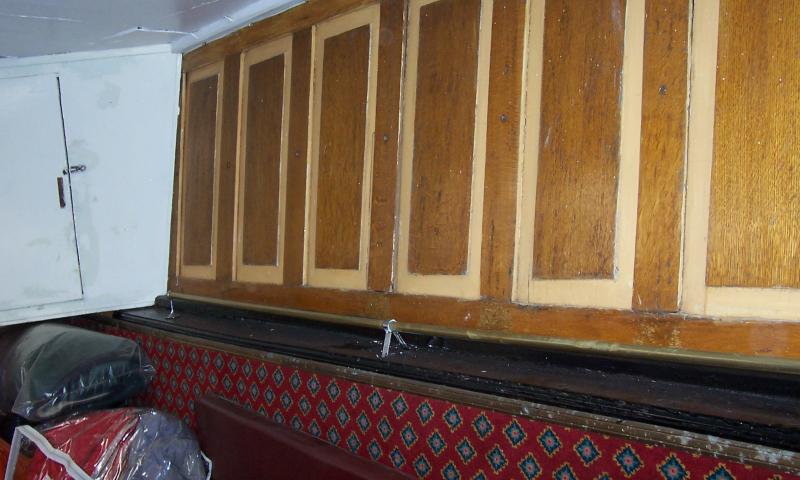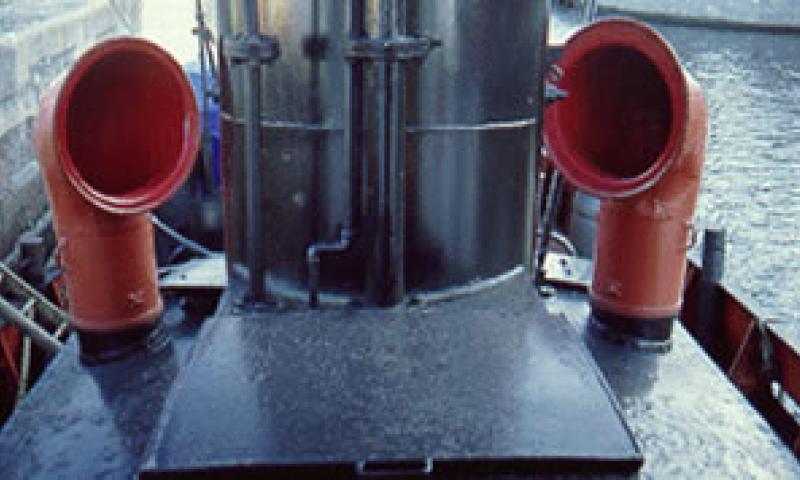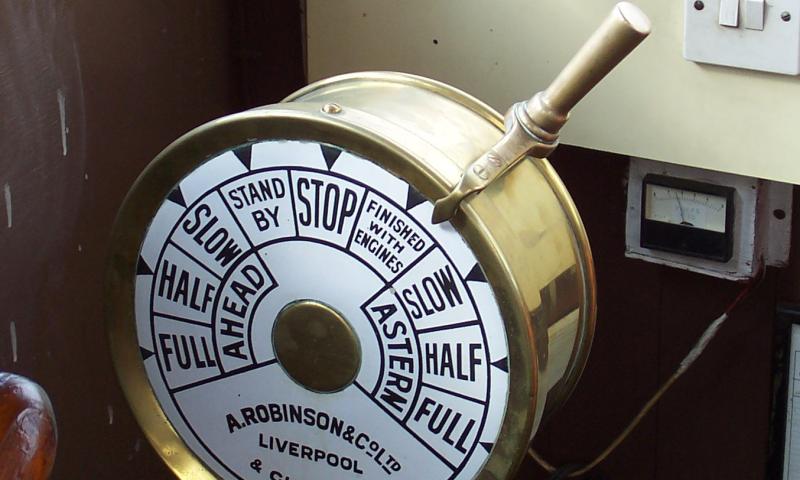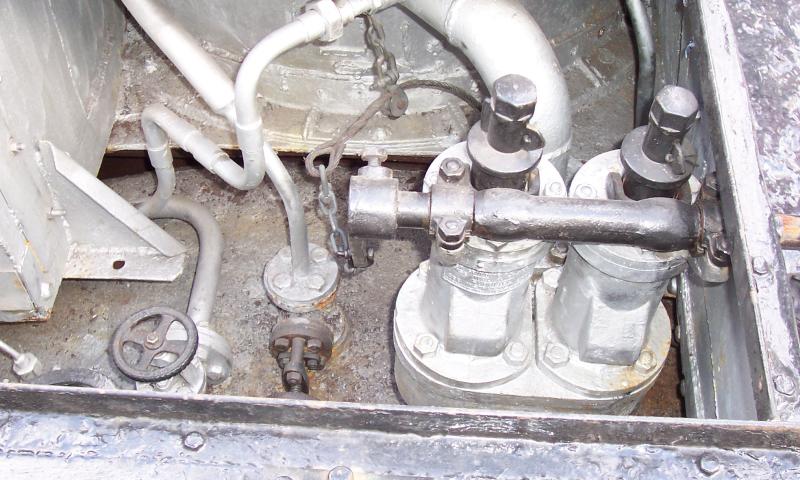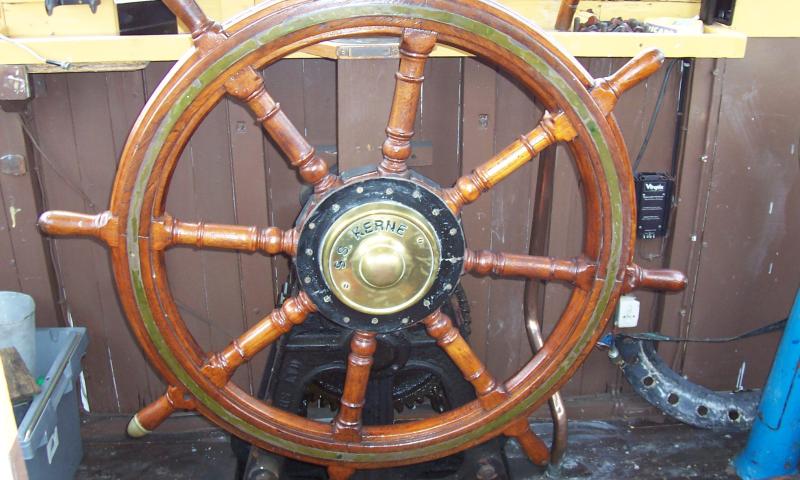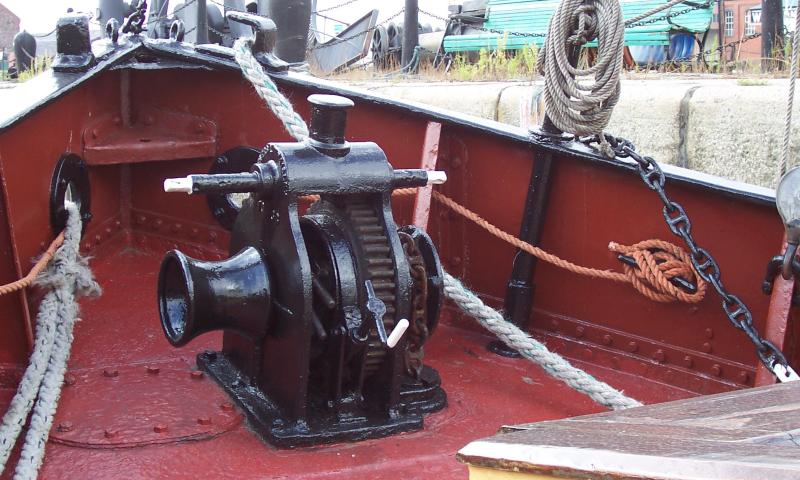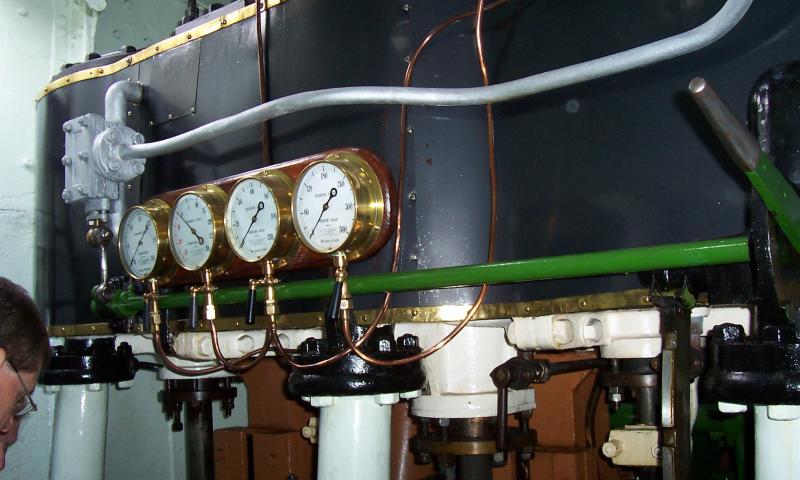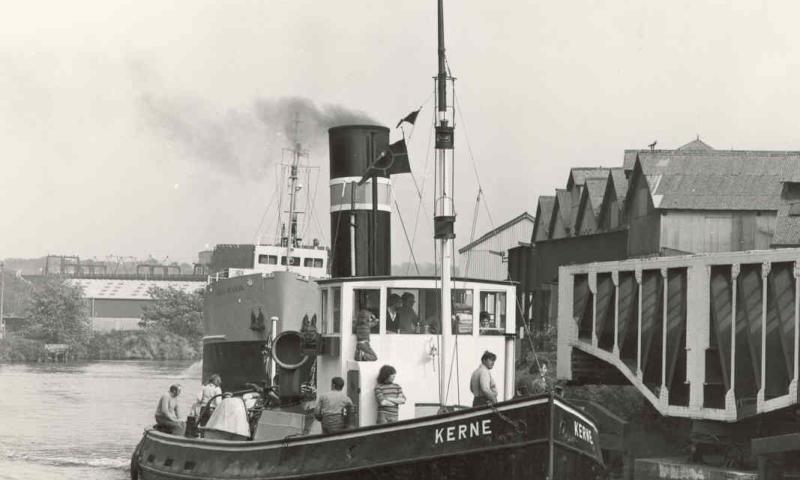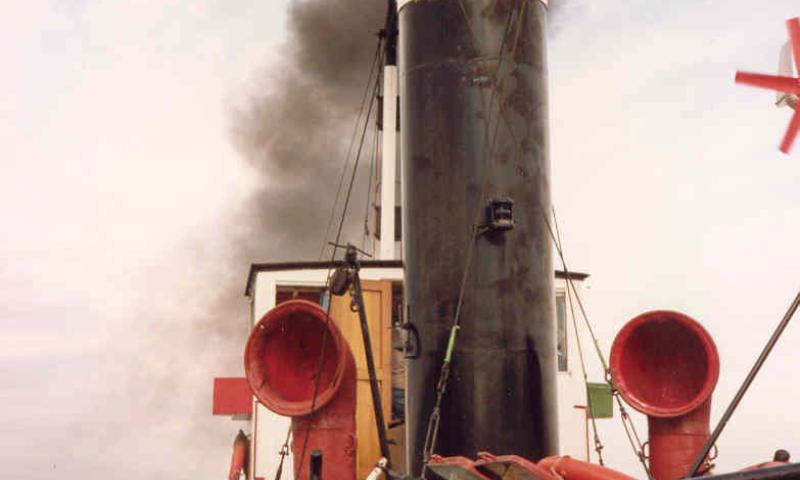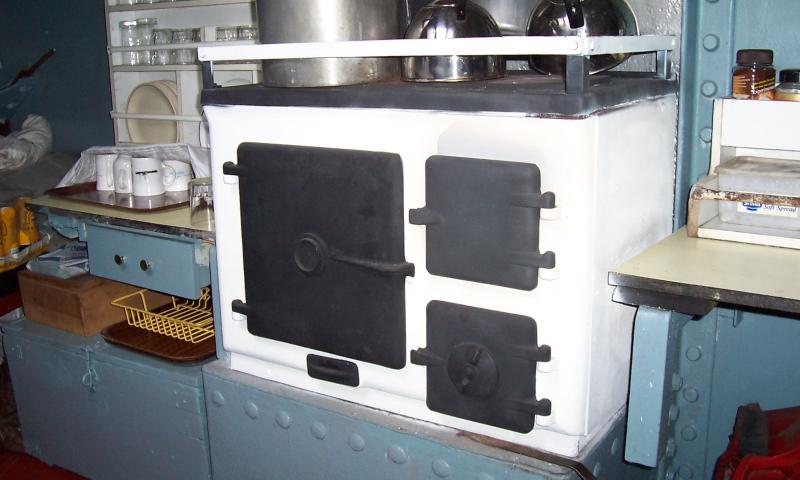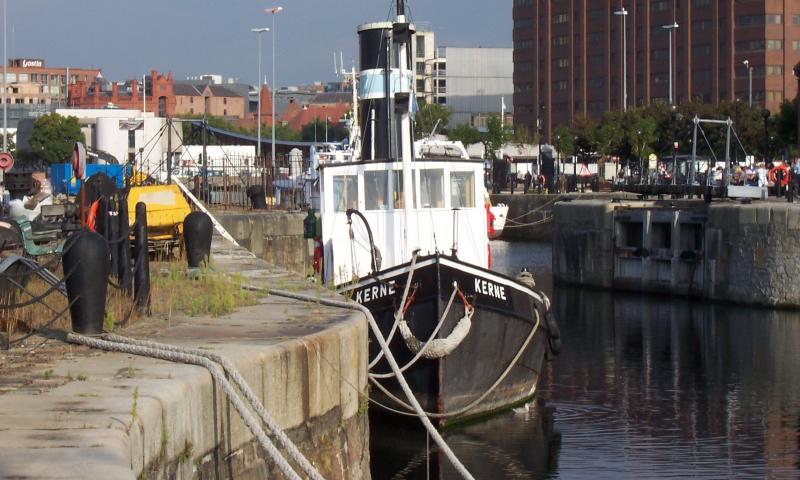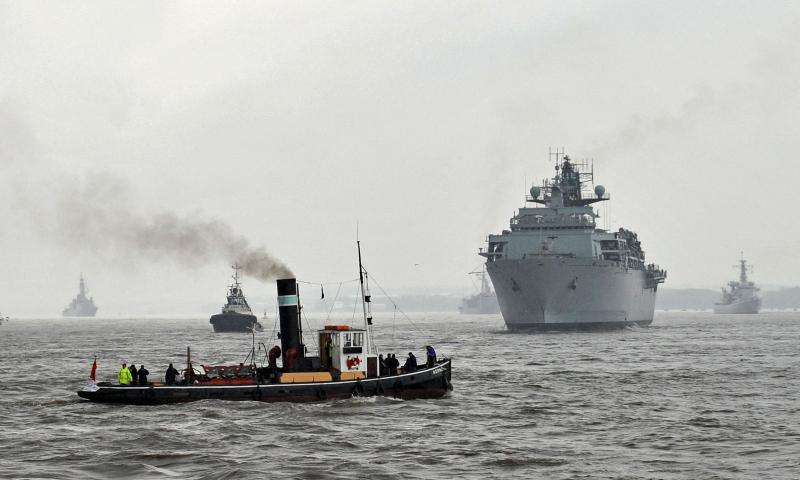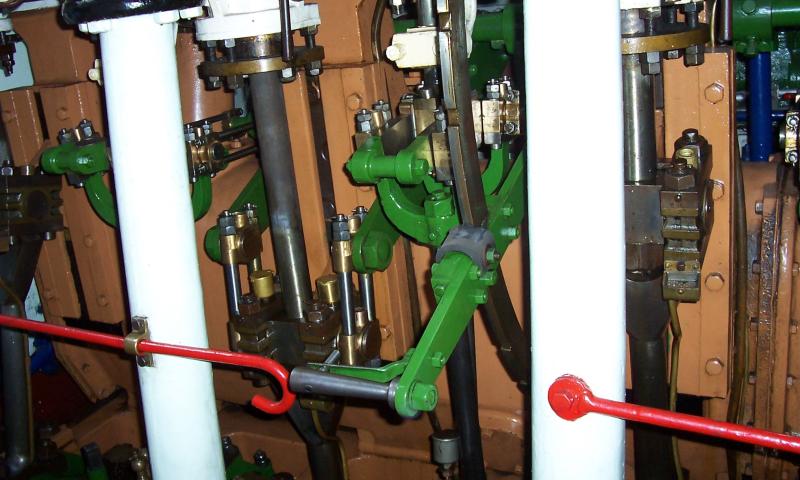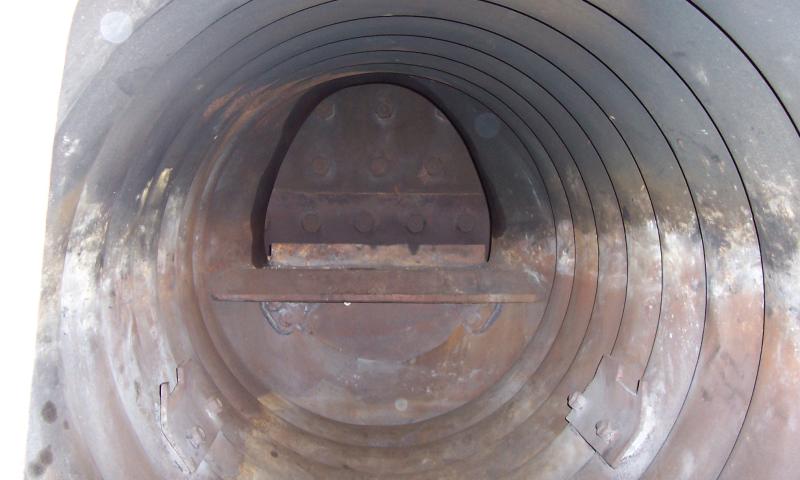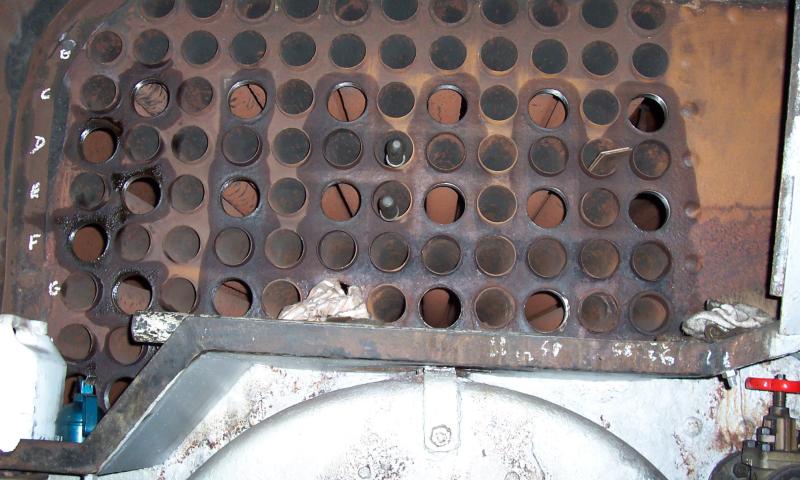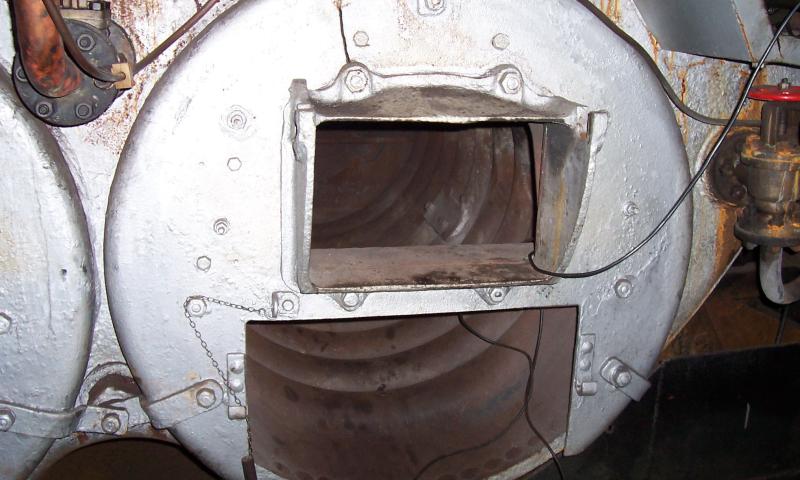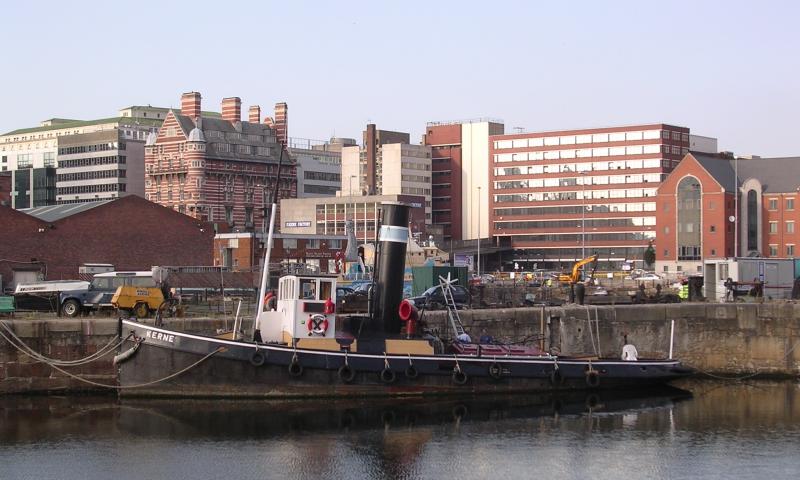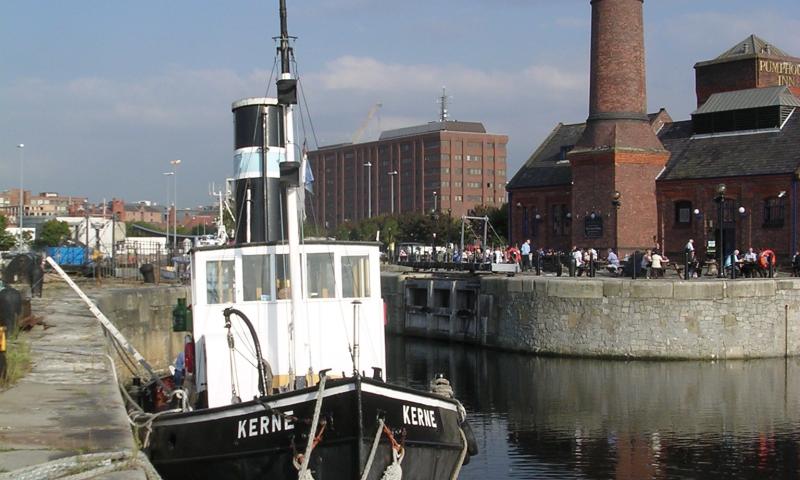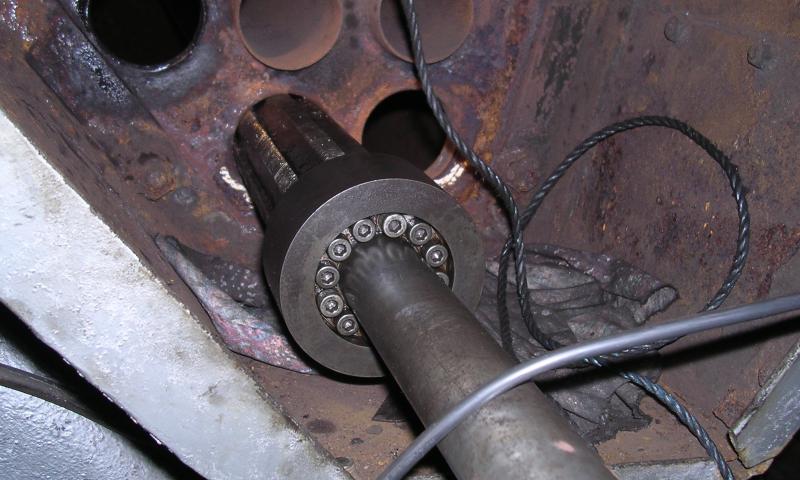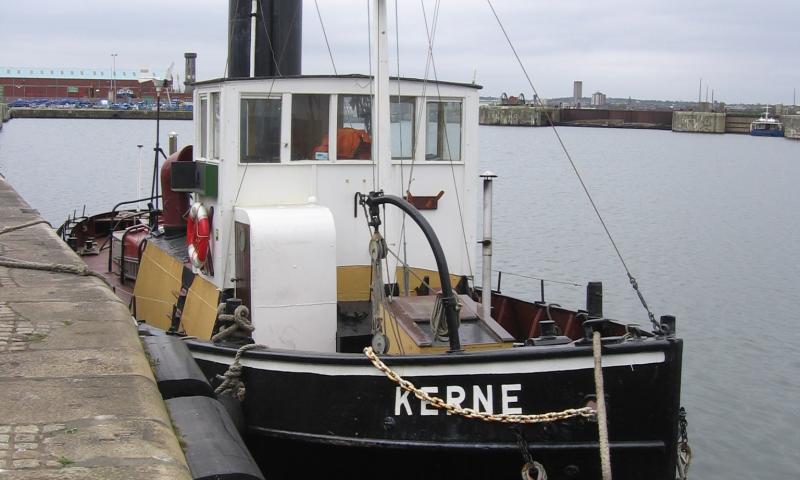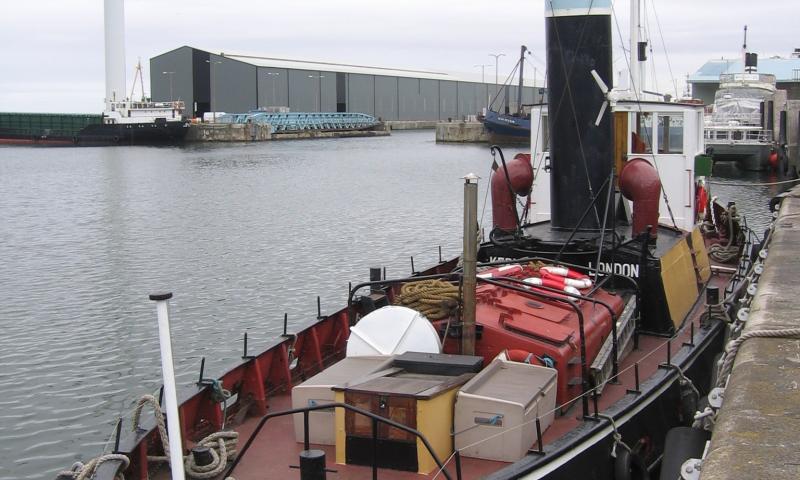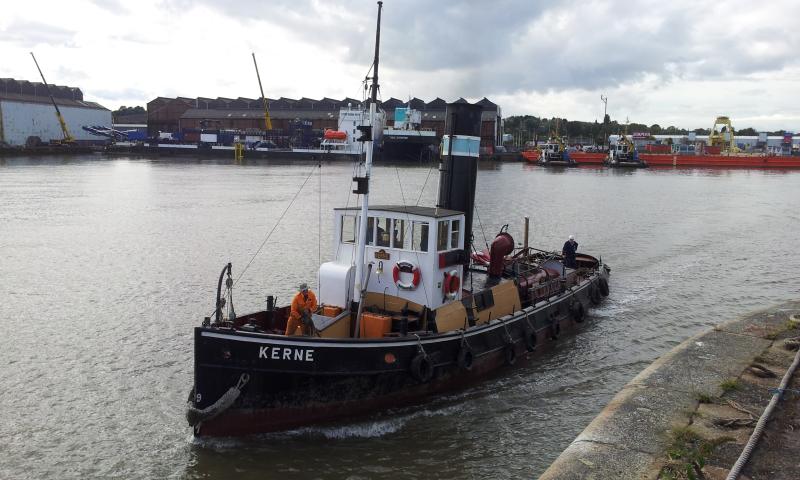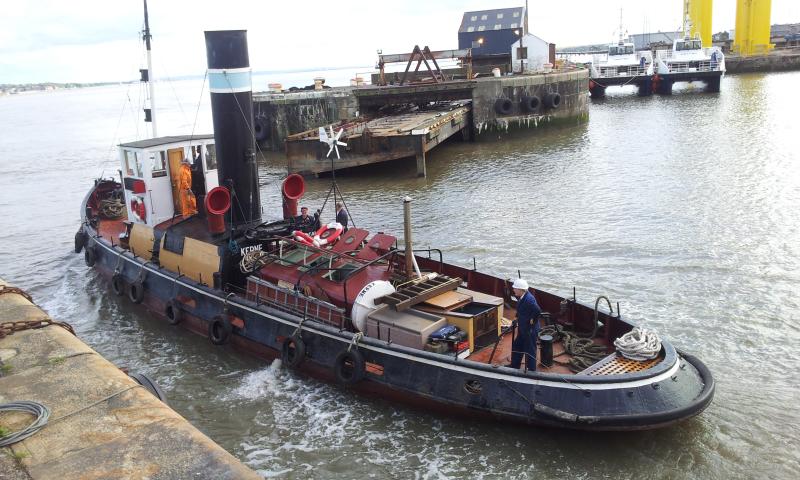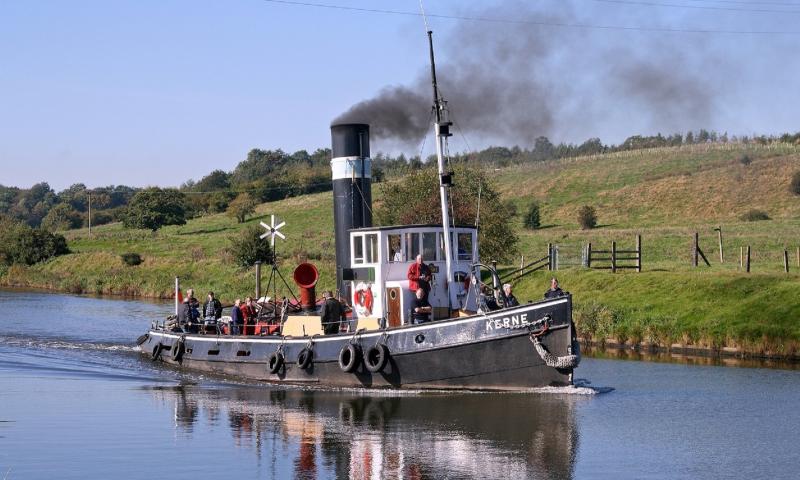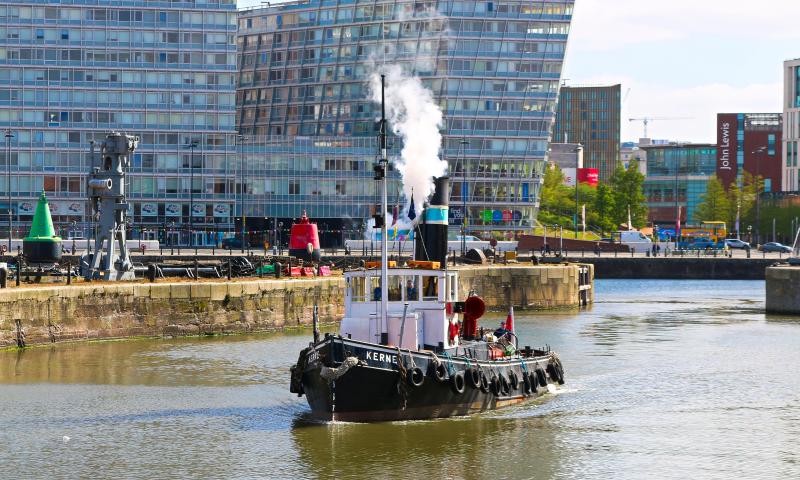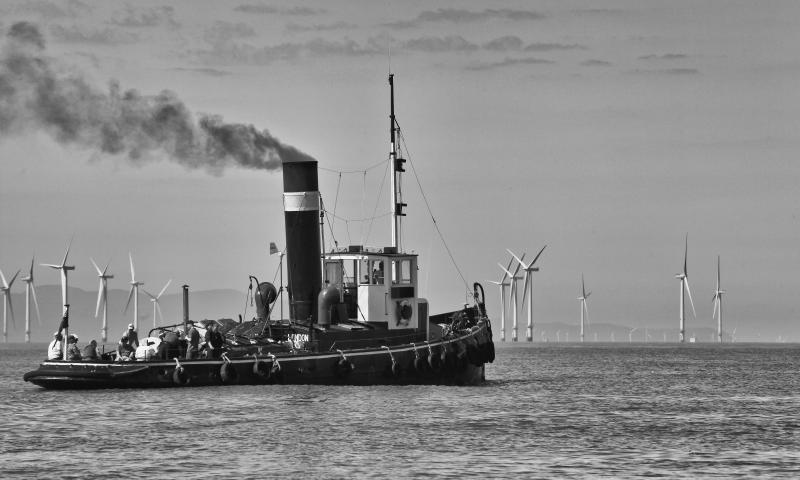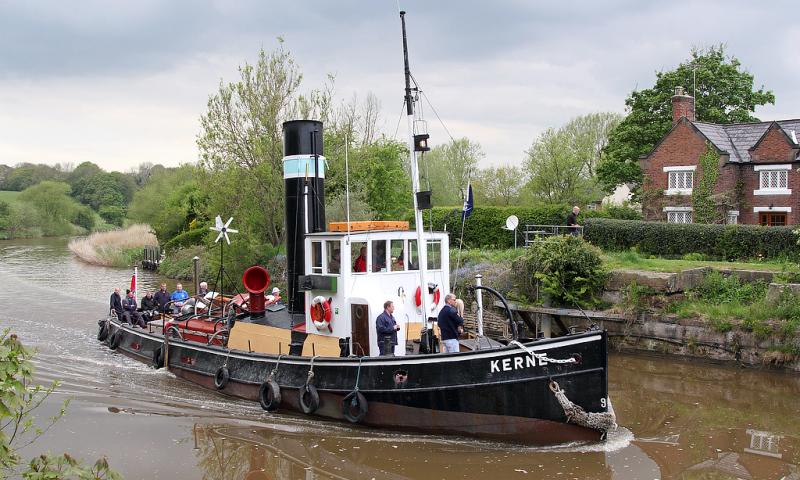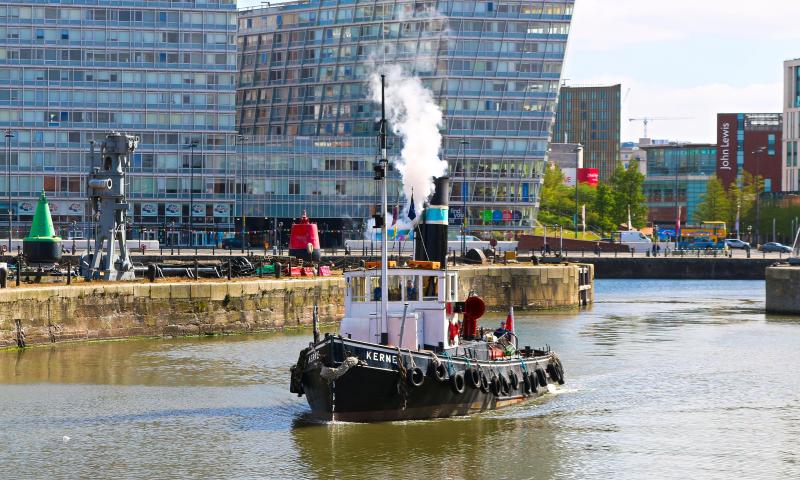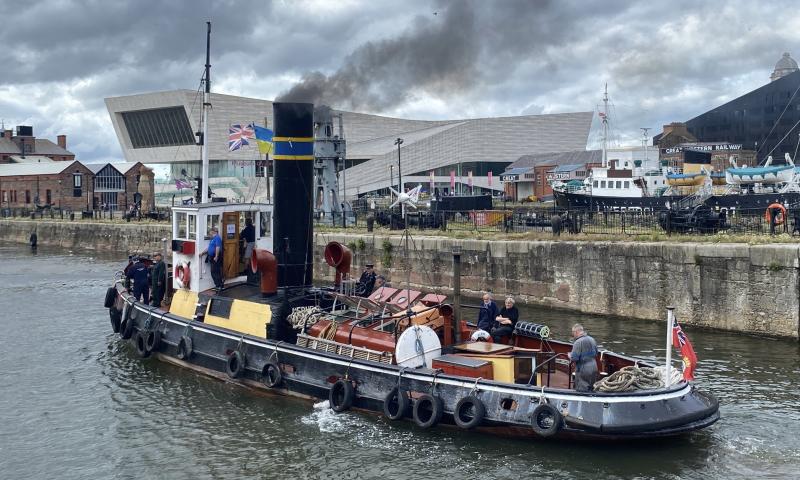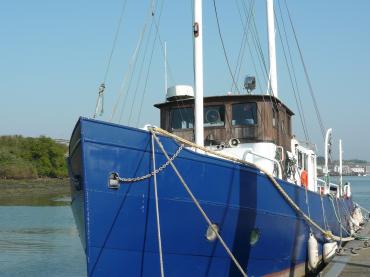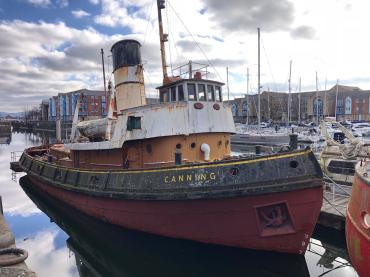Previous names
- 1913 - 1913 Viking
- 1913 - 1947 Terrier
Details
Construction
Dimensions
History
KERNE was to be named VIKING by her builders, but while under construction, the Admiralty took her over and renamed her TERRIER. The launching and steam trials took place in March 1913 and TERRIER sailed for Chatham where she worked for 35 years, undertaking general dockyard duties in Chatham.
In March 1912 Winston Churchill, who was then First Sea Lord, ordered the return of the three complete Mediterranean Fleets from the dockyards at Gibraltar and Malta to protect the North Sea in case of war with Germany. The French Navy was left to guard the Mediterranean Sea. The return of the fleets put additional strain on Chatham and Sheerness Dockyards to service them.
The dockyards were already under pressure due to the naval arms race between Britain and Germany and the reorganization of the Navy begun by Admiral Jackie Fisher in 1906. Fisher’s policy resulted in the scrapping of old craft, and Churchill’s order resulted in additional tugs and service craft being urgently required as the fleets returned home during 1912/13.
Work on constructing KERNE began in 1912. She was built by the Montrose Shipbuilding Company to the order of Messrs Gerdes-Hansen and Company of London, and was originally named VIKING. However, whilst under construction she was acquired by the Admiralty who renamed her H.M. TUG TERRIER. On 6 March 1913 she sailed for London, and on arrival went into immediate service with the Admiralty.
TERRIER was to be one of two ‘basin tugs’ bought for Chatham in 1912/13, the other being H.M. TUG TYKE (tyke being a dialect name for a small dog). Her launching and steam trials took place in March 1913, and TERRIER sailed for Chatham where she worked for the next 35 years, undertaking general dockyard duties in Chatham. She was classed as an Admiralty Yard Service Craft operating as an auxiliary vessel for the Admiralty.
TERRIER served as a basin tug during the First World War, operating within the confines of the three enclosed basins at Chatham. Here small tugs were required to manoeuvre large vessels in the relatively confined dock basins. These basins were built in the 1860’s to service the “Steam Navy”. Two of the basins are still in use as commercial docks by Medway Ports.
Although in peacetime the crew would have been dockyard civilians answering to the Captain of The Dockyard, in wartime she would have been manned by naval crew. The vessels flew a blue ensign defaced with a yellow anchor badge.
In 1948 TERRIER was sold to Messrs J P Knight Ltd. of London for use on the River Thames. She still had her folding funnel (counterbalanced) and open wheel house.
Coming out of Admiralty usage, TERRIER was first registered in London on the 28 July 1948 and received her new name - KERNE. All of J. P. Knight's fleet of tugs had names beginning with the letter 'K'. In this case KERNE is Gaelic for 'foot soldier' or 'warrior'. On the 13 September 1949, KERNE was sold to the Straits Steamship Company Ltd. of Liverpool, a subsidiary of the Liverpool Lighterage Company.
During 1949 she was modified with a non-folding funnel of increased height, an enclosed wheel house, a new mast, washports were cut in the after bulwarks and a small whaleback compartment on the deck housed the WC. In this guise, KERNE towed barges and operated on the River Mersey, the Manchester Ship Canal and River Weaver systems for the next 22 years. Her ownership passed to the Liverpool Lighterage Company Ltd in April 1965 who also operated the steam tugs BONITA and LANGBOURNE.
In April 1971, she was replaced by a motor tug and KERNE, the last 'lighterage' tug, was laid up for disposal and sold to the North Western Steam Ship Co. Ltd, a non-profit making organisation, for preservation in steam condition - retaining the name KERNE.
KERNE is usually based at the Merseyside Maritime Museum at Liverpool or at the Boat Museum at Ellesmere Port. She has made voyages to the Isle of Man, North Wales ports, Port Madoc and regularly cruises on the River Weaver and Ship Canal systems. She has also taken part in four films and in 1990 was awarded the 'Steam Heritage Award - Marine Section.
Significance
1. What is the vessel’s ability to demonstrate history in her physical fabric?
Evidence for designs, functions, techniques, processes, styles, customs and habits or uses and associations in relation to events and people. How early, intact or rare these features are may impact on significance.
KERNE was built in 1912 by the Montrose Shipbuilding Company. Her hull was constructed using 7/20 to 10/20 inch steel and she had a 3-bladed steel propeller with a diameter of 7 feet 10 inches. Steering was by means of chain and rod. In January 1913 she was fitted with a three cylinder, triple expansion, double acting Ligerwood engine and a ‘Scotch’ boiler with two furnaces. She was re-boilered in 1935 with a new boiler built to original drawings. KERNE retains her original engine and 1935 boiler which continue to be maintained in full working order today. She has a coal bunker with a capacity of 12 tons, and carries 12 tons of water in her boiler, and a further 7 tons in reserve in an aft peak tank. In 1948 she still had her original 17 foot counter-balanced folding funnel and open wheelhouse, but during 1949 she was modified with a non-folding funnel of increased height, an enclosed wheelhouse, and a new mast. Wash ports were cut in the aft bulwarks, and a small whaleback compartment on the deck housed the toilet. She continued operating in this configuration for the next 22 years, until 1971, as she towed barges in the Mersey region. Since then, regular repairs and replacements have been carried out including an ultrasonic survey in 2009. In 2011, the propeller shaft was overhauled and the bearings replaced. A new generator was fitted in 2013 and essential repairs to her hull under the boiler were carried out in 2014. Despite these remedial works, KERNE has retained a large part of her original hull and superstructure.
2. What are the vessel’s associational links for which there is no physical evidence?
Associations with people or places. Off-ship research.
KERNE was originally named VIKING by her builders, but whilst under construction in 1913 she was bought by the Admiralty as part of the general build-up of maritime power prior to the First World War. She was renamed HMT TERRIER and went into immediate service undertaking general dockyard duties at Chatham dockyard where she continued to work for 35 years giving her a strong association with this area. In 1948 ownership passed to Messrs J.P. Knight Ltd. of London, whose tugs all had names beginning with the letter ‘K’ and re-named KERNE. A year later, she was bought by the Straits Steamship Company Ltd. of Liverpool and operated on the River Mersey, the Manchester Ship Canal and the River Weaver for the next 22 years, towing barges. Since her working life ended, KERNE has made voyages to the Isle of Man, North Wales and Port Madoc, and continues to cruise on the River Weaver and Ship Canal systems. She has taken part in four films, and in 1990 was awarded the Steam Heritage Award-Marine Section. She was also selected to participate in the Royal Review of Ships in the Mersey during the Queen’s Silver Jubilee of 1977. KERNE was built as a humble Admiralty tug, but is now a rare survivor from the First World War era, being the last surviving steam harbour/river tug still operational and driven by her original machinery. She has been recorded on the National Register of Historic Vessels since 2005 and is part of the National Historic Fleet.
3. How does the vessel’s shape or form combine and contribute to her function?
Overall aesthetic impact of the vessel, her lines, material she was built from and her setting. Does she remain in her working environment?
KERNE has the characteristic appearance of an early 20th century steam vessel, with the low freeboard, large stoke-hold ventilators and tall funnel which were typical of harbour tugs of the time. Her funnel is painted in the distinctive black with blue and white bands which marked the Liverpool Lighterage Company. Her lines, dimensions and shape made her fit for purpose in her role as an estuarial/dock tug. The strong connections with the Merseyside region forged during the second part of KERNE’s working life remain in place today as she continues to operate in full steaming condition from the Merseyside Maritime Museum at Liverpool or the Boat Museum at Ellesmere Port.
Source: NHS-UK team, 02 April 2016.
This statement was developed as part of the Heritage Lottery funded First World War project. http://www.ww1britainssurvivingvessels.org.uk/
Key dates
-
1912
Built by the Montrose Shipbuilding Company to th eorder of Messrs Gerdes-Hansen and Company of London and named Viking
-
1913
Fitted with engine and boiler in Dundee, in January
-
1913
Sailed for London on 6 March and on arrival went into immediate service with the Admiralty and renamed HM Tug Terrier
-
1936
The boiler was replaced with a standard Admiralty boiler with the superstructure removed to facilitate the change and then welded in position along with a section of welded deck
-
1948
Bought by J P Knight Ltd, of Rochester, re-named KERNE and registered as a Commercial vessel, reg. no. 181972
-
1948
Sold to the Straits Steamship Company and deployed on the river Mersey, operated by Liverpool Lighterage
-
1955
Open wheelhouse replaced with full wheelhouse fixed welded tunnel fitted, whale back structure built on forward deck to accommodate W.C and mast relocated and given fixed position. Modifications were made to suit Liverpool operating requirements
-
1966
Ownership transferred to Liverpool Lighterage Co. Ltd
-
1971
KERNE replaced by motorised tug and sold into preservation to seven Merseyside-based enthusiasts
-
1971
Since 1971, vessel has operated in preservation in the North West of England and the Welsh Coast
-
2015
Kerne to be taken from Huskisson Dock Liverpool to Cammell Laird No 4 Dry Dock on 21 May for hull repair
-
August 2018
Steam Tug Kerne Preservation Society awarded Queen's Award for Voluntary Service
-
2019
Boiler repair underway
Grants
-
February 2025
A Sustainability Grant of £500 towards an ultrasonic thickness test was made from the Strategic Development Fund of National Historic Ships UK, supported by Winter & Co Marine Ltd
-
March 2023
A Sustainability Grant of £1000 for remedial work was made from the Strategic Development Fund of National Historic Ships
-
2020
Received £9,600 Heritage Emergency Fund grant
-
July 2020
A Sustainability Grant of £750 towards the cost of slipping was made from the Strategic Development Fund of National Historic Ships UK
-
2018
A Sustainability Grant of £1,000 towards the costs of boiler work were made from the Strategic Development Fund of National Historic Ships
-
2014-2015
The Heritage Lottery Fund awarded £85,200 for repairs to the hull
-
2013
A Sustainability Award of £1000 towards the costs a generator was made from the Strategic Development Fund of National Historic Ships UK
-
2013
A Sustainability Grant of £1000 towards the cost of remedial was made from the Strategic Development Fund of National Historic Ships
-
2012
Sustainability Grant withdrawn
-
2011
A Sustainability Grant of £1000 towards the cost of overhauling the propellor shaft was made from the Strategic Development Fund of National Historic Ships
-
2009
A Sustainability Award of £2000 for an ultrasonic survey was made from the Strategic Development Fund of National Historic Ships
Sources
Brouwer, Norman J, International Register of Historic Ships, Anthony Nelson, Edition 2, 1993
Kirkbride, Paul, Ships Monthly: Still in Steam: tug KERNE, pp8-10, 1977
Sullivan, Dick, Old Ships, Boats and Maritime Museums, Coracle Books, 1978
Steamboat Register: An illustrated Register of surviving steam vessels in the British Isles, Steam Boat Association of Great Britain, Edition 6, May 1994
The North Western Steam Ship Company Limited: A brief history of the steam tug KERNE built in 1913, North Western Steam Ship Company, 1995
Ships Monthly: Kerne Wins Award, November 2018
Own this vessel?
If you are the owner of this vessel and would like to provide more details or updated information, please contact info@nationalhistoricships.org.uk



